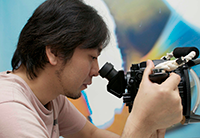TAKUYA NAKAMURA
Born in Tokyo, Japan in 1975, he first encountered diving in the Keramas Islands of Okinawa when he was 10 years old and was captivated by the mysterious underwater world. He studied photography at Nihon University College of Art and apprenticed himself to his father, underwater photographer Yukio Nakamura, and worked as a photography assistant for four years while also taking photographs for newspapers and magazines. Later, as a diving instructor, he taught underwater photography techniques while continuing to take photographs, and moved to the main island of Okinawa to expand his field of activity. Currently, he is active as a freelance underwater photographer, communicating the beauty of the Okinawan sea and environmental issues through TV and radio programs. He is currently based in Tokyo.
Review of VF45 1.2x
Osezaki in Nishi-Izu before sunrise.
With MDX-D300 with VF45 1.2x (45° viewfinder) hanging in one hand, I went to the open sea (under the fence).
Fuji in the morning glow was my first subject for the VF45 1.2x. With a 35mm lens with a near-standard angle of view, I looked through the viewfinder, relying on the faint outline of Fuji that emerged in the darkness as the sun rose.
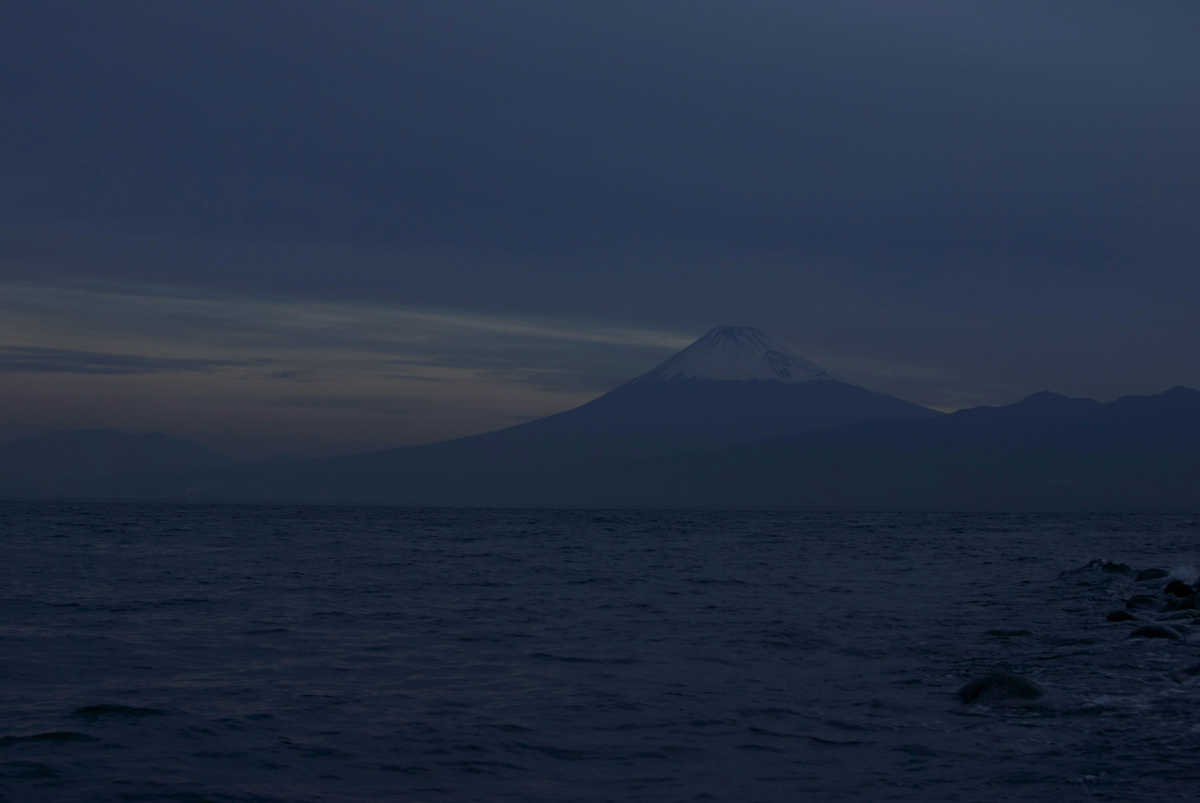
Fuji's outline in the darkness
(Lens is NIKKOR 35mm f1.8)
My first impression of the VF45 1.2x is as follows. The aura of Fuji, with its ever-changing colors, is palpable. This is it! The stress of focusing hesitation and composition is suddenly blown away by this unprecedented feeling of ecstasy. The view is truly clear.
Immediately, I crawled on my stomach on the slope at the edge of the surf and looked through the viewfinder again to get a lower angle.
The gap between the image in my mind and the image in the viewfinder was closing. I had the impression that the viewfinder guided me precisely to the subject without any hesitation in the position of the eye point, which I had been worried about.
In order to get closer to the image of Fuji floating among the waves, I immersed the dome port half underwater. This is where the advantage of the VF45 1.2x lens comes into play, as it allows the photographer to look through the viewfinder without an underwater mask, even while being sprayed in the face by the waves.
I released the shutter at the moment Fuji's surroundings turned orange in the morning sun that emerged from behind him.
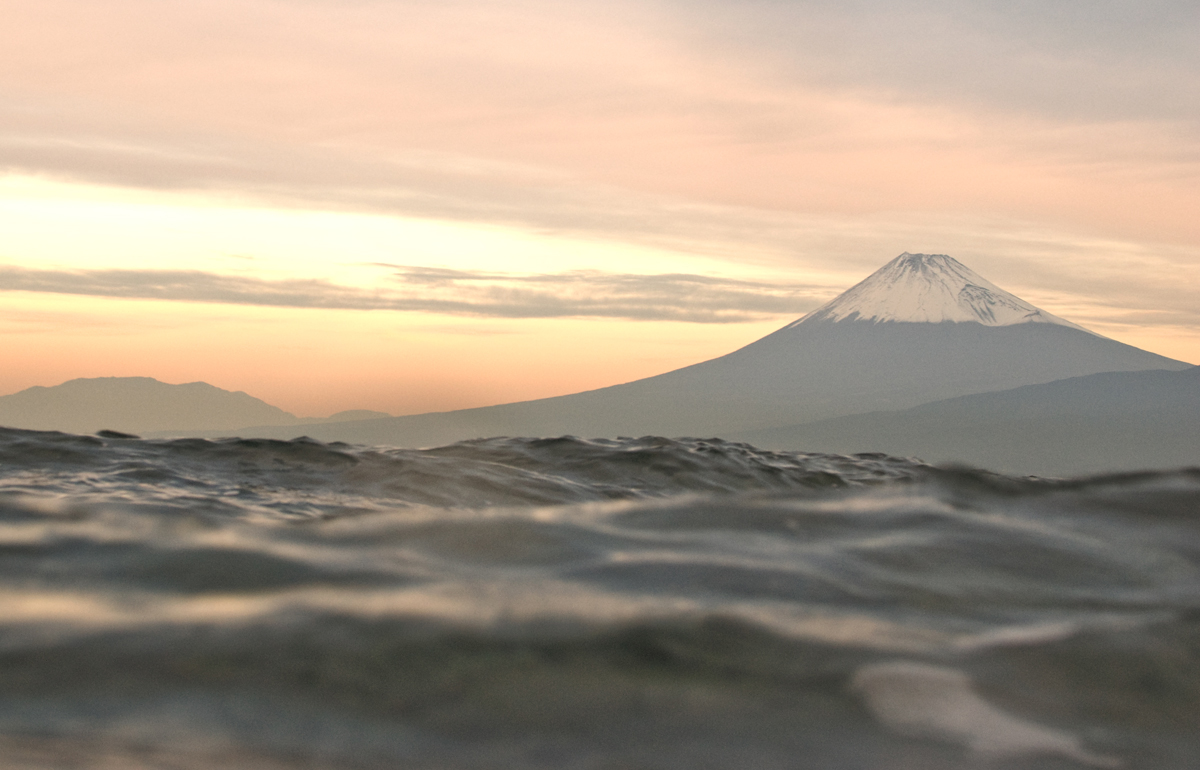
Fuji in the morning glow among the waves
(Lens is NIKKOR 35mm f1.8)
Normally, this would be a scene where the photographer would put on a wetsuit and shoot while neck-deep in the sea.
However, it is not very efficient to get soaked in seawater at this early hour of the morning when the store's showers are not available for land photography.
However, thanks to the 45° tilt of the viewfinder, I was able to record 1,400 photos in just one hour of sunrise in my regular clothes.
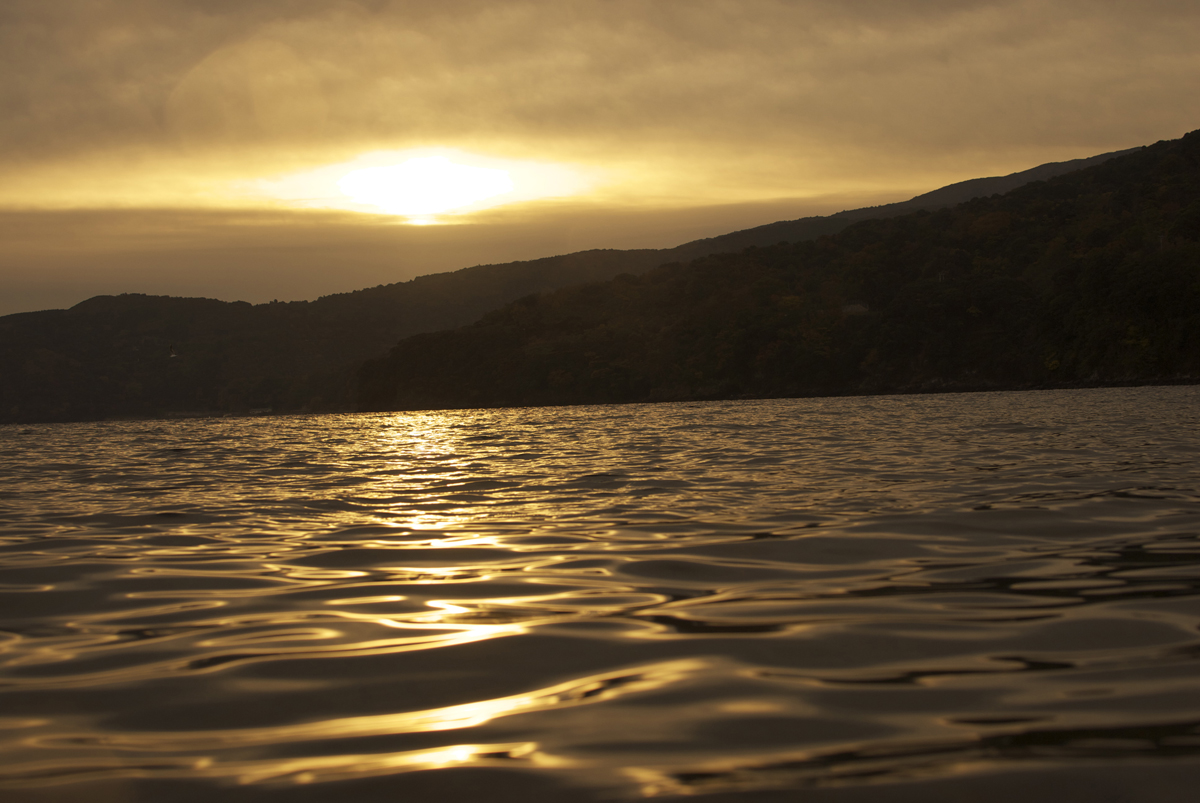
Osezaki Bay at sunrise
(Lens: NIKKOR 35mm f1.8)
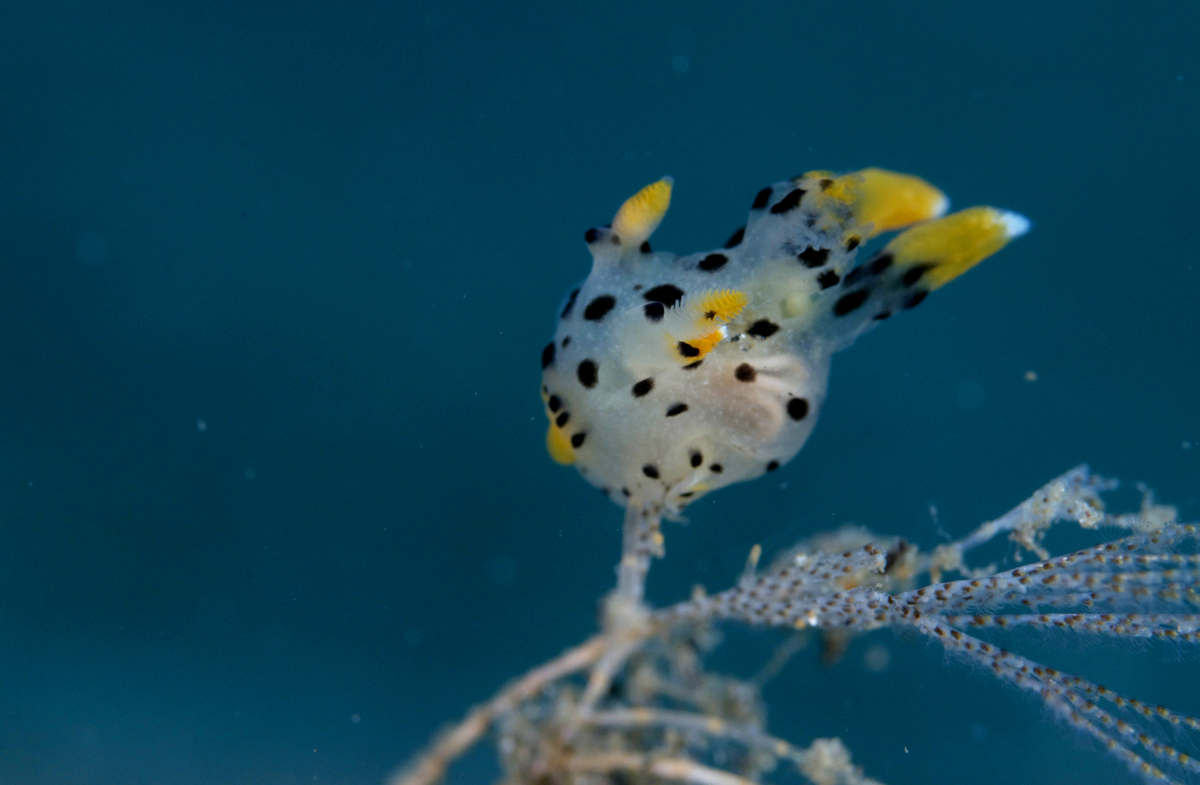
Sea Slug
(Lens is Micro NIKKOR 60mm f2.8)
Next, I put on my 60mm macro lens and went underwater in the bay. My steps were light with curiosity about my new field of vision. Excitedly searching for a subject, I found a one-centimeter-long nudibranch on the top of a bear decoy beetle, just five centimeters above the sand.
This was the perfect subject to test the VF45 1.2x. In fact, my biggest concern with the new viewfinder was how it would "hit" small subjects when using the macro lens. Even if the new viewfinder provided a clear field of view, I would miss a shutter opportunity if I could not feel the image of the subject in the viewfinder.
However, my fears were proven correct. I focused on the subject at the shortest distance and crawled close to it as if crawling on the sand at the bottom of the housing, and the image of a petrel emerged clearly in the middle of the viewfinder.
The 45° tilt of the viewfinder is also effective here. This is the true essence of VF45 1.2x: macro photography from a low angle. Most of the time, macro photography is not about photographing fish swimming in the middle of the water, but rather about subjects living on sand, rocks, or sea grass.
In such cases, when the camera is positioned at a low angle, just above the bottom of the water, the photographer is forced to look through the viewfinder in an uncomfortable position. For example, when I look through the viewfinder while almost crawling on my stomach, my chin is forced up and my breathing is disturbed. This makes it difficult to concentrate on taking the picture and often results in an overhead angle, which is a mistake that makes the picture look unimpressive.
The 45° tilt of the viewfinder is enough to calm your breathing and allow you to concentrate on creating the best possible picture. Furthermore, since the regulator does not touch the back of the housing, I was able to hold the camera firmly without any discomfort.
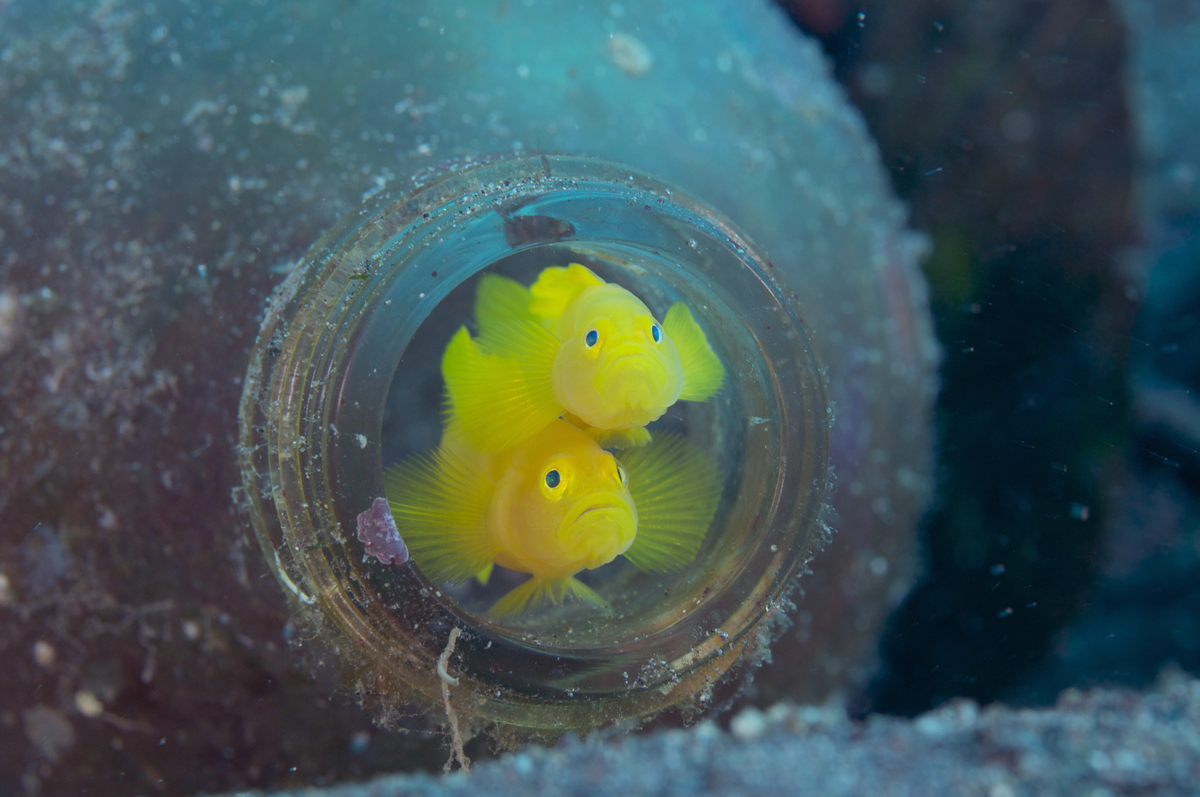
A pair of Mijin-jelly goby
(Lens: Micro NIKKOR 60mm f2.8)
Next, I photographed a yellow-bellied goby living in a bottle lying in a depression in the sand. With the 0.66x pickup viewfinder attached to the housing in the past, there was no vignetting in the four corners, but the magnification of the field of view was low and it took some time to focus on both eyes of the two fish. The effect of the VF45 1.2x was also demonstrated after confronting the subject in the viewfinder. The focus is more clearly visible than before, allowing me to concentrate on the composition and timing of the shutter release without being distracted by the focusing.
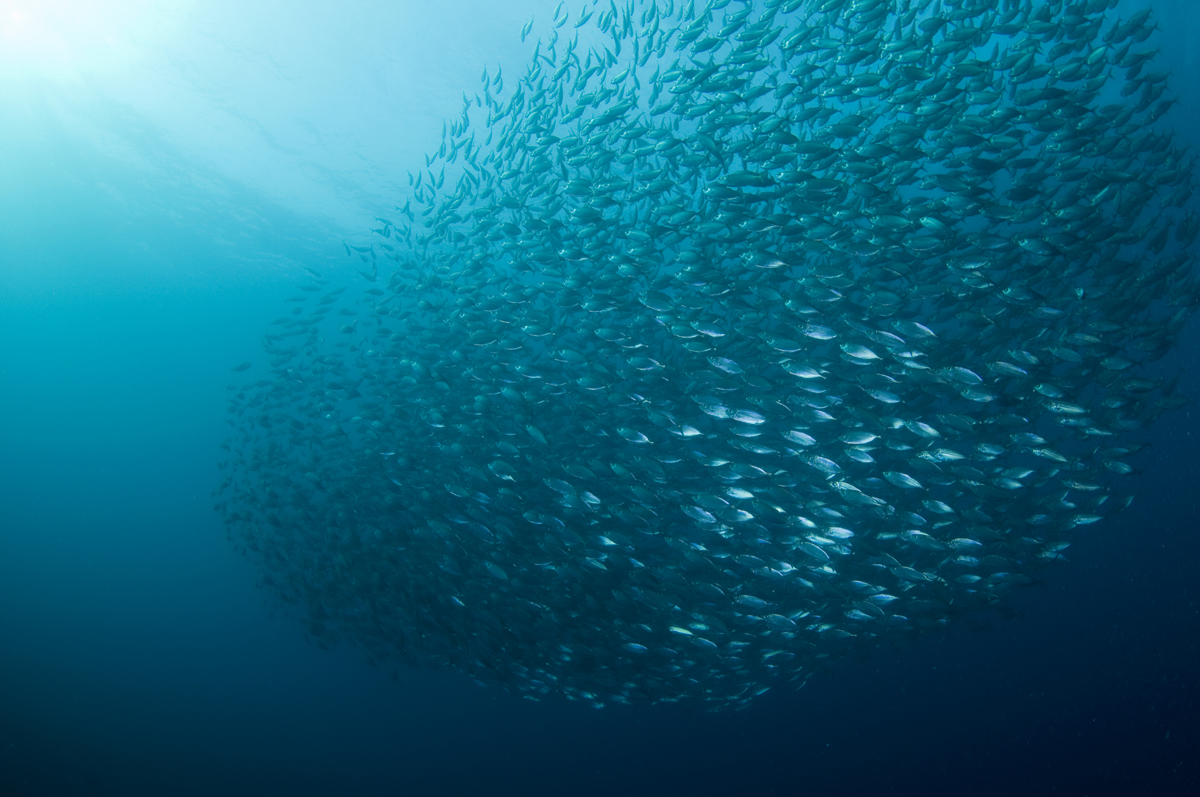
A school of horse mackerels
(Lens: TOKINA 10-17mm fisheye f3.5-4.5)
On that day, thousands of bigeye jacks were forming a ball of horse mackerels in Osezaki Bay.
I quickly changed to a wide angle setting and entered the bay again.
The focus dial was set to zoom because of the Tokina 10-17mm lens. I held the camera with my left hand as if lifting the bottom of the camera to shoot with the zoom almost fixed on the 10mm side.
This is a habit of mine, but I prefer to do this so that my upper arm does not get tired when taking pictures while swimming.
I found that the viewfinder should be angled at 45° when shooting with the camera in this position.
This is probably the reason why most professional movie camera viewfinders are tilted.
Furthermore, the wide field of view of the VF45 1.2x viewfinder, which has no vignetting at all in the four corners, is also very large in the wide field of view. The wide field of view of the VF45 1.2x, which has no vignetting in the four corners, is also very useful in the wide field of view.
Just when you think the horse mackerel balls are floating to the surface, the next moment the school changes its shape like a river and moves all together to the bottom of the sea.
The advantage of this viewfinder is that I can measure the distance from the seafloor with my left eye without taking my eyes off the viewfinder during this repetitive up and down movement.
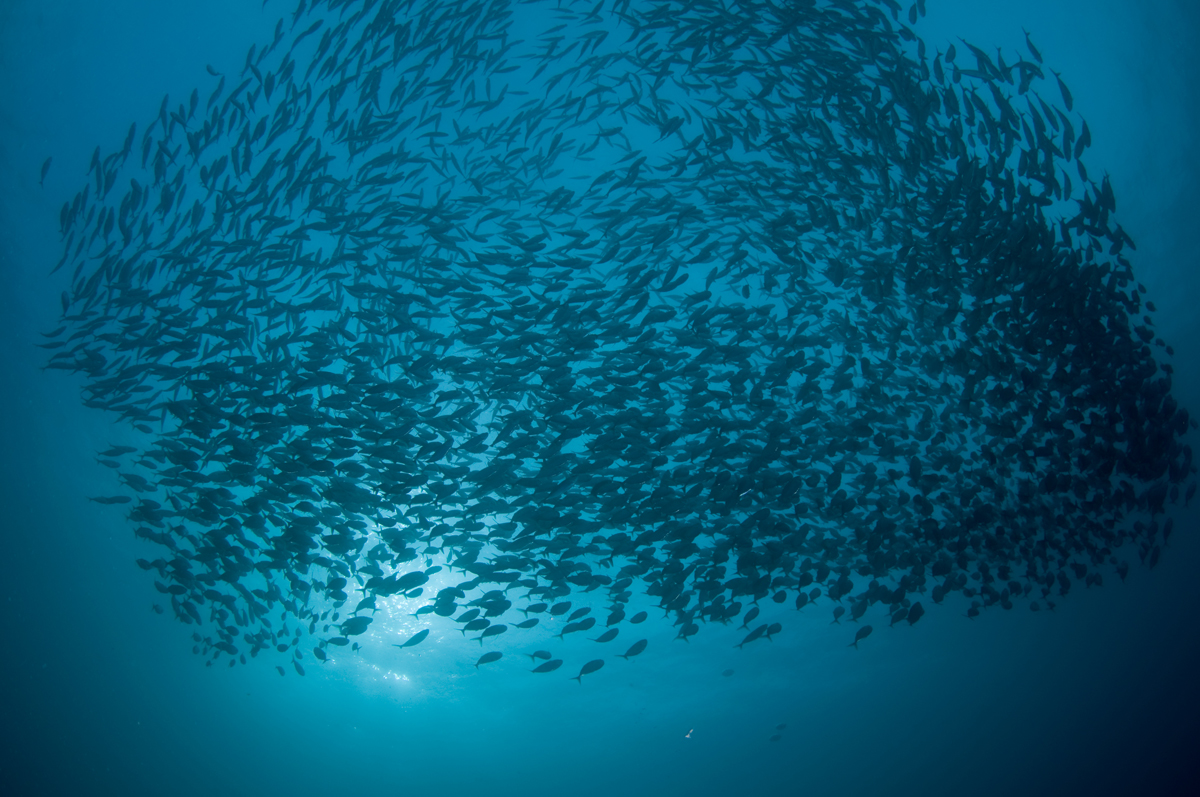
A school of horse mackerels
(Lens: TOKINA 10-17mm fisheye f3.5-4.5)
I have tested the VF45 1.2x with a standard lens, a macro lens, and a fisheye zoom lens at three different angles of view, and I am very satisfied with the results under all conditions.
In fact, I would say that it has become an indispensable item. Further refinement of its use should yield more positive results. I love the sea that I can see through these new, evolved eyes.
*Copyright of these image data belongs to SEA&SEA Corporation or the photographer indicated.
